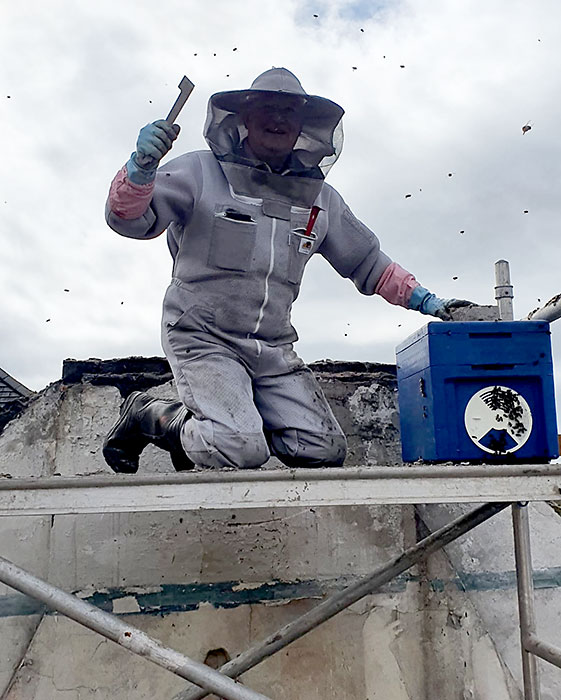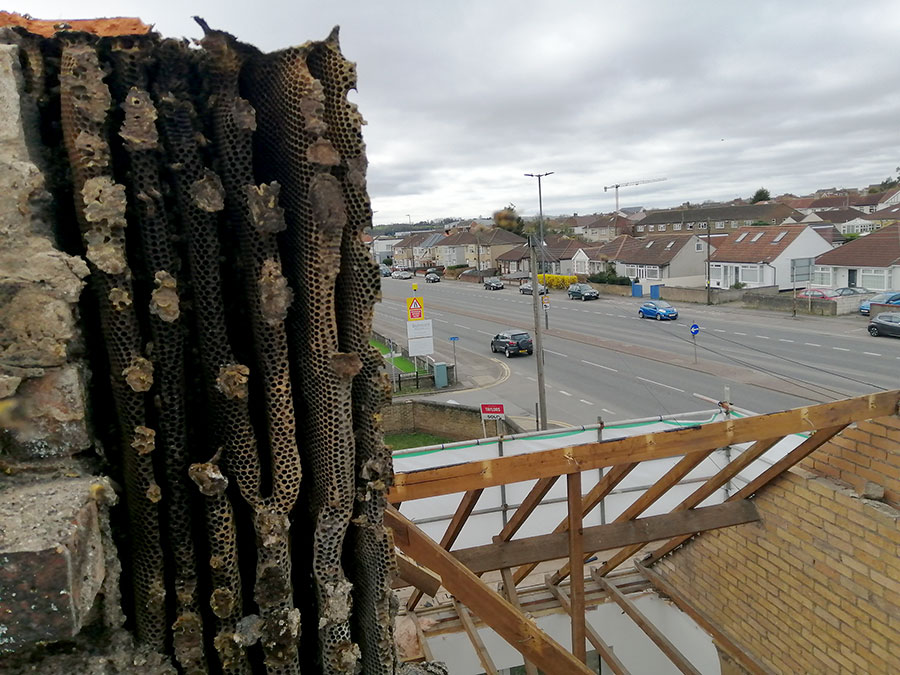A Little Stoke apiarist has rescued a colony of bees from a massive nest discovered inside a redundant chimney stack above a building on the A38 Gloucester Road in Patchway.

Tim Hewer says he was contacted by a builder who was working on the property and had noticed “a few bees” flying around the chimney stack, which was about to be demolished.
Knowing that worker bees fly when the air temperature is above 10 degrees, as it was on the day in question, Tim went to investigate and was able to confirm that the insects were indeed honey bees.
With the identification confirmed, Tim started to dismantle the chimney stack, with the help of one of the builders who had kindly volunteered and been equipped with a spare beekeeper’s suit.
Tim explains:
“The air temperature on the day was 14 degrees, so the bees were out foraging and bringing in pollen (protein) and nectar (carbs) to feed their larvae. This told me it was a healthy colony of about 20,000 bees, and after stripping the bricks away I found the brood chamber and put it in a nucleus box.”
“I moved the box 5 yards from the stack and the worker bees started fanning at the entrance to indicate to the flying bees that the queen was in residence. I returned at night with the builder and collected all the bees that had returned.”
The bees were fed that night and locked in for 24 hours.
Tim continued:
“As my apiary is in Little Stoke, I couldn’t keep the bees as common wisdom is that you should only move a colony less than 2ft or more than 5 miles [otherwise there is a risk of the bees returning to the precise previous site of the colony, failing to find it, and dying].”
The bees were therefore moved to a friend of Tim’s in Ashton Vale and he reports that they have settled very well there.

Tim estimates that the nest in the chimney stack was 6ft tall and around four years old.
Anyone who thinks they have identified a swarm of honey bees that may need removal is advised to consult the website of the British Beekeepers Association through which contact can be made with a nearby beekeeper.
This article originally appeared in the May 2021 issue of the Bradley Stoke Journal magazine (on page 19). The magazine is delivered FREE, nine times a year, to ALL 8,700 homes in Bradley Stoke. Phone 01454 300 400 to enquire about advertising or leaflet insertion.



